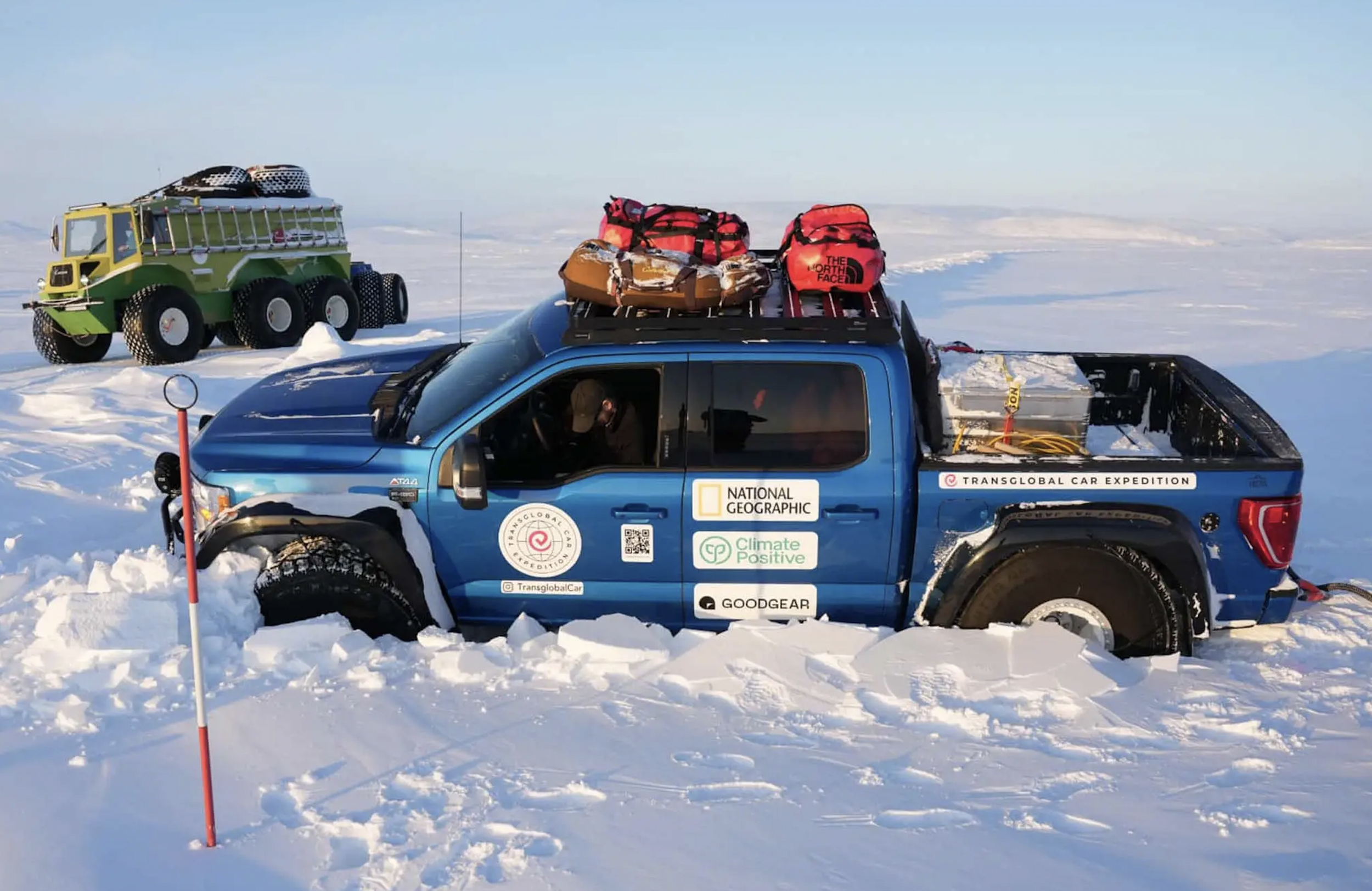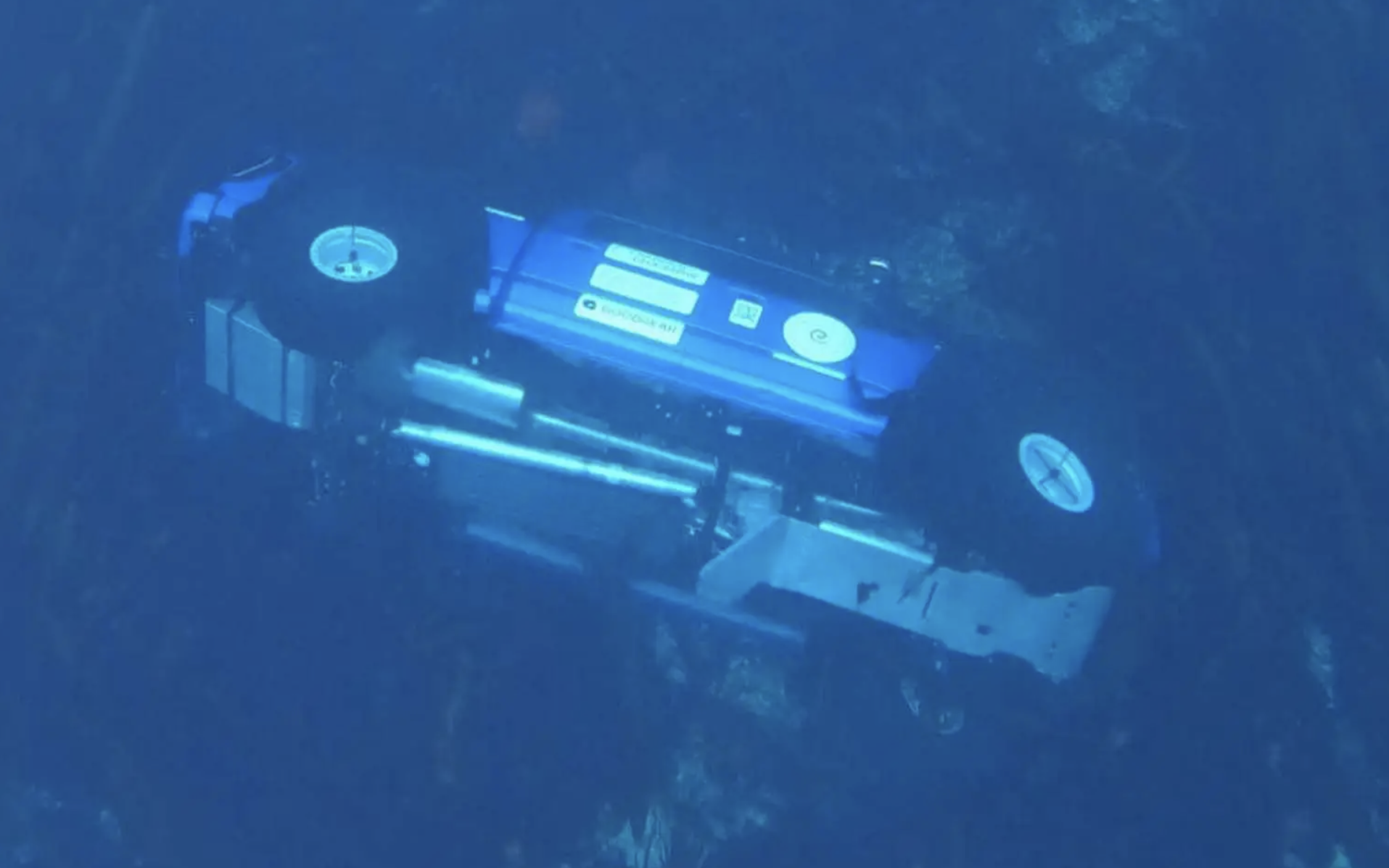Transglobal Car Expedition gets a lesson in global warming
Back in March of this year I was horrified and angered to read the following headline on the Explorers’ Web:
“Transglobal Car Expedition Loses Vehicle Through Ice; Local Inuit Village Outraged.” (Read the article here.)
The vehicle was a Ford F150 prepared by Arctic Vehicles, first known for their fat-tired Icelandic Toyotas. The truck was part of a seven-vehicle fleet conducting a test run for something called the Transglobal Car Expedition, the stated purpose of which is to cross both geographic poles by vehicle, all on the surface (that is, no flights, only ship transport when necessary). The website also says— quoting verbatim here—“We believe that we can embrace the Earth by meridian by meridian and unite people all over the world in one common journey.” (The rest of the site exhibits similar egregious editing issues. End snark.)
Unfortunately, on this “common journey,” while crossing sea ice off the northwest coast of the Boothia Peninsula, in Canada’s Arctic, the truck broke through thin ice and began sinking. The crew was able to escape before the truck plunged the rest of the way through and went to the bottom in about 30 feet of water—while carrying “40 liters of fuel,” a backup generator presumably carrying its own fuel, plus of course the engine and transmission oils and fluids. (I wonder if the “40 liters of fuel” actually refers to jerry cans, and doesn’t include fuel in the main tank.)
The irony here is significantly thicker than the ice through which the truck sank. An expedition in the process of burning tens of thousands of gallons of fossil fuel to “embrace the earth” loses one of its vehicles through arctic sea ice—which is rapidly thinning and receding due to our overuse of fossil fuels.
According to West Hansen, an explorer whose planned sea kayaking expedition through the Northwest Passage will cross the path of the TCE route, the group failed to consult local residents about ice conditions. In fact, one of the putative side goals of the expedition (besides uniting people all over the world) is to provide local communities with data about ice conditions.
You read that correctly. With one pass through the area, the Trans Global Car Expedition will advise the Inuit, who have been living, traveling, and hunting in the region for thousands of years, about local conditions. The group actually issued this official statement regarding the incident: "It has also provided important data on the viability of travel on the ice in the context of global warming, which is making traveling over the ice more dangerous for Indigenous communities and other ice travelers.” One team member added, regarding the plan to recover the truck, “ . . . our respect for the land motivates our desire to do the right thing to remediate the area, and also bring the world’s eyes to one of the most pristine and beautiful places on the planet.” Is your irony meter now bouncing off the peg like mine?
The remediation, sadly, did not happen quickly. The vehicle sat on the floor of the Arctic Ocean, in the densest layer of its subsurface life zone, for five months before it was brought back to the surface, so the recovery team could take advantage of better weather and ice conditions. In the meantime the truck was rolled around on the ocean floor by currents, and wound up in water twenty feet deeper than that in which it sank. Despite this, the team claims they recovered the truck “without any damage to the fragile ecosystem.” I guess we’ll have to take their word for it, although I find it difficult to believe a 7,000-pound truck rolling around on the sea floor wouldn’t do some damage, even if there was zero leakage of fluids.
Let’s back up and think about this entire endeavor. What will the Transglobal Car Expedition accomplish, assuming they complete the trip in 2023-2024 without losing too many more vehicles to thinning arctic ice?
Both geographic poles have already been reached, multiple times, on foot, unsupported (not even any generators along . . .). How does driving internal-combustion-powered trucks to those poles expand the envelope of human endeavor? Not only is there nothing scientific to be achieved, it is in fact a prominent middle finger to climate scientists, biologists, and local communities urging preservation of these sensitive regions. (I was stunned to discover that the National Geographic Society lent its status to this project, and I wonder if the recent debacle has given the directors any second thoughts.) Will the TCE “unite people around the world” as stated on the website? Sorry, but I think Coca Cola has a better chance of doing that. (To be fair to the TCE, several so-called “eco-tourism” companies are gleefully offering cruises via giant ships to formerly inaccessible areas of the Arctic Ocean, including complete transits of the Northwest Passage.)
For just one example of the outsize impact the TCE will have on the planet, consider the single flight mentioned in the linked article. The Dassault Falcon 900 jet Russian oligarch Vasily Shakhnovsky, the apparent patron of the TCE, used to (illegally) fly to Canada to visit the team holds 3,000 gallons of JP5 jet fuel, giving it a range of 4,700 nautical miles. I’ll leave you to estimate the total amount it took to fly one man to and from Canada. (This, as well as the helicopter recovery of the Ford, also makes moot the expedition’s claim that it will use only “surface transportation.”)
Let’s back up some more. Vehicle travel—whether for personal enjoyment or ambitious, hugely financed “first-time-ever” goals—can be considered a single very large, graduated gray area. At the pale end of the scale we wouldn’t drive anywhere. But most of us reading this live in the real world, and realize that retiring to live in a cave, as the more dullard anti-environmentalists like to urge environmentalists to do, won’t solve anything. Individual and small-group travel by vehicle, as anyone who has done it knows, actually is one very effective way to genuinely “unite the world.” Thus we accept a status somewhat farther along the gray scale.
But a massive “expedition” pursuing a spurious “first” and attempting to justify it with an even more spurious scientific or “world peace” agenda lies, if you’ll forgive me, at the polar opposite end of that scale, in a very, very dark region.
Edit: After I posted a link to this story on Facebook, I received a polite and measured reply from Andrew Comrie-Picard, one of the TCE team members who was on the recovery effort for the Ford pickup. He went to lengths to assure me that the team did in fact take every precaution to minimize damage to the ecosystem, and said that fluid leakage from the vehicle had been minimal. I appreciate his information, although it does not change my opinion regarding the irony of the accident, or the massive overall impact and resource consumption of this effort, for a dubious goal.



